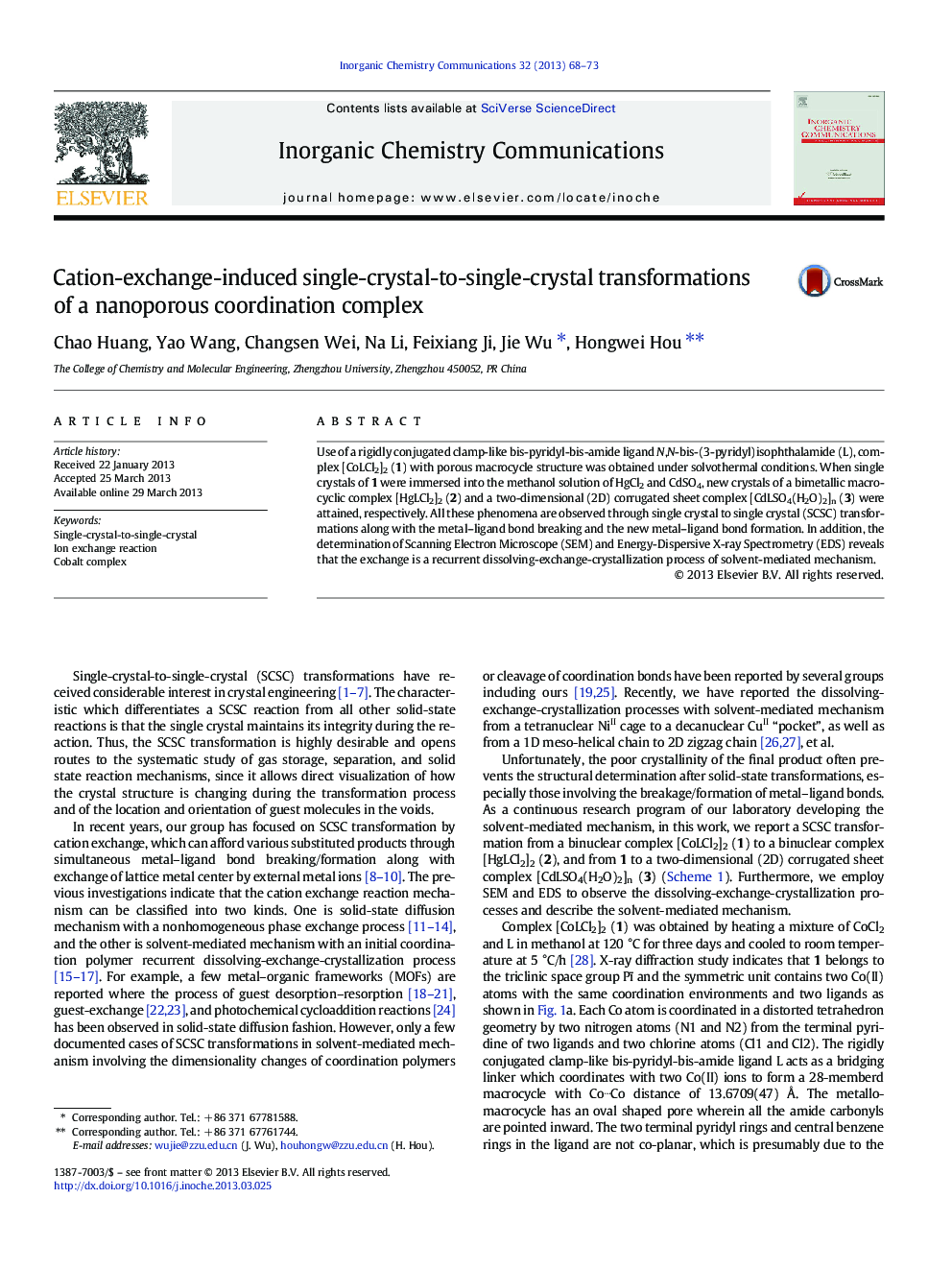| کد مقاله | کد نشریه | سال انتشار | مقاله انگلیسی | نسخه تمام متن |
|---|---|---|---|---|
| 1303799 | 1498958 | 2013 | 6 صفحه PDF | دانلود رایگان |

• SCSC transformations from [CoLCl2]2 (1) to [HgLCl2]2 (2) were attained.
• SCSC transformations from 1 to a 2D complex [CdLSO4(H2O)2]n (3) were attained.
• All the phenomena are observed via single crystal to single crystal transformations.
• The exchange is a recurrent dissolving-exchange-crystallization process.
Use of a rigidly conjugated clamp-like bis-pyridyl-bis-amide ligand N,N-bis-(3-pyridyl)isophthalamide (L), complex [CoLCl2]2 (1) with porous macrocycle structure was obtained under solvothermal conditions. When single crystals of 1 were immersed into the methanol solution of HgCl2 and CdSO4, new crystals of a bimetallic macrocyclic complex [HgLCl2]2 (2) and a two-dimensional (2D) corrugated sheet complex [CdLSO4(H2O)2]n (3) were attained, respectively. All these phenomena are observed through single crystal to single crystal (SCSC) transformations along with the metal–ligand bond breaking and the new metal–ligand bond formation. In addition, the determination of Scanning Electron Microscope (SEM) and Energy-Dispersive X-ray Spectrometry (EDS) reveals that the exchange is a recurrent dissolving-exchange-crystallization process of solvent-mediated mechanism.
Complex [CoLCl2]2 (1) (L = N,N-bis-(3-pyridyl)isophthalamide) was obtained under solvothermal conditions. When crystals of 1 were immersed into the solution of HgCl2 and CdSO4, new crystals of [HgLCl2]2 (2) and [CdLSO4(H2O)2]n (3) were attained, respectively. All these phenomena are observed through SCSC along with the metal-ligand bond breaking and formation.Figure optionsDownload as PowerPoint slide
Journal: Inorganic Chemistry Communications - Volume 32, June 2013, Pages 68–73